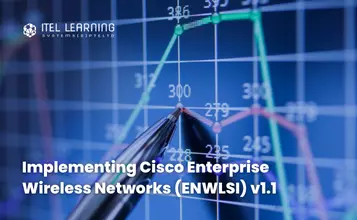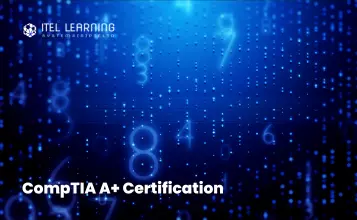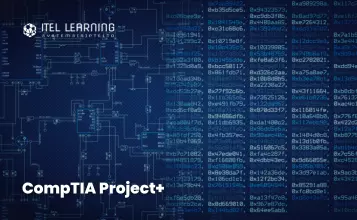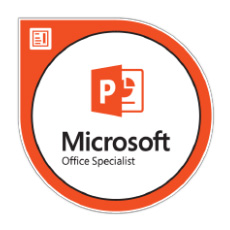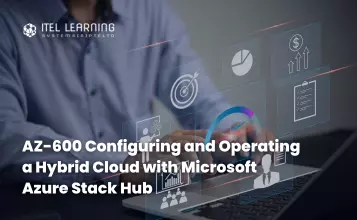Overview
In this 5-day instructor-led course, experienced developers who know the basics of data access (CRUD) in Windows client and Web application environments will learn to optimize their designs and develop better performing data access code by using the ADO.NET Entity Framework, and ADO.NET.
Prerequisites
Participants who wish to take up 10265 Developing Data Access Solutions with Microsoft Visual Studio 2010 should meet the following prerequisites:
- An understanding of the problem-solving techniques that apply to software development, including the following principles of software development:
- Modern software development models
- Typical phases of a software development lifecycle
- Concepts of event-driven programming
- Concepts of object-oriented programming
- Creating use-case diagrams
- Designing and building a user interface
- Developing a structured application
- A basic understanding of the purpose, function, and features of the following .NET Framework topics:
- Common Language Runtime
- .NET Framework class library
- Common Type System
- Component Interoperation
- Cross-language interoperability
- Assemblies in the Common Language Runtime
- Application domains
- Runtime hosts supported by the .NET Framework
- Experience using Visual Studio 2008 in the following areas:
- Declaring and initializing typed variable using the Camel case naming convention
- Using arithmetic, relational, and logical operators in code statements
- Using branching statements to control code execution
- Using looping statements to iterate through collections or repeat steps until a specified condition is met
- Creating classes and methods to establish the basic structure of an application
- Using methods and events to implement the programming logic of an application
- Identify syntax and logic errors
- Accessing and managing data from a data source
- Experience in object-oriented design and development as follows:
- Creating and accessing classes and class properties
- Creating and accessing methods and overloaded methods
- Implementing inheritance, base classes, and abstract classes
- Declaring, raising, and handling events
- Responding to and throwing exceptions
- Implementing interfaces and polymorphism
- Implementing shared and static members
- Implementing generics
- Creating components and class libraries
- Experience in N-Tier application design and development as follows:
- Managing a software development process
- Controlling input at the user interface level in Windows Client and Web Applications
- Debugging, tracing, and profiling .NET qualifications
- Monitoring and logging .NET applications
- Implementing basic testing best practices
- Performing basic data access tasks with LINQ
- Basics of LINQ to XML
- Basics of LINQ to Entities
- Basics of LINQ to SQL
- Implementing basic security best practices in .NET Applications
- Basics of Code Access Security
- Basics of Role-Based Security
- Basics of Cryptography Services
- Implementing basic service calls
- Basics of creating and consuming XML Web Services
- Basics of creating and consuming WCF Services
- Using .NET Configuration Files
- Deploying .NET Framework Applications using ClickOnce
Who Should Attend?
This course is intended for professional .NET software developers who use Microsoft Visual Studio in a team-based, medium-sized to large development environment. They will have experience implementing data access and data binding within their Web and/or Windows client applications and are interested in learning to optimize data access code in their applications by using the Entity Framework, LINQ, and ADO.NET. Members of the audience are experienced users of Microsoft Visual Studio 2008 SP1 or newer releases of the Visual Studio product. The audience has some experience using Visual Studio 2010 for either Windows client or Web application development.
Typically, this audience has the following knowledge/experience:
- Experience developing n-tier applications that access various data sources
- Experience implementing data binding within their applications
- Some experience using LINQ and ADO.NET
- A conceptual understanding of the Entity Framework
Course Outline
- Data Access Technologies
- Data Access Scenarios
Lab: Analyzing Data Access Scenarios
- Introduction to Entity Data Models
- Modifying the Entity Data Model
- Customizing the Entity Data Model
Lab: Using Entity Data Models
- Retrieving Data by Using LINQ to Entities
- Retrieving Data by Using Entity SQL
- Retrieving Data by Using Entity Client Provider
- Retrieving Data by Using Stored Procedures
- Unit Testing Your Data Access Code
Lab: Querying Entity Data
- Understanding Change Tracking in the Entity Framework
- Modifying Data in an Entity Data Model
Lab: Creating, Updating, and Deleting Entity Data
- Handling Concurrency in the Entity Framework
- Transactional Support in the Entity Framework
Lab: Handling Multi-User Scenarios by Using Object Services
- The Stages of Query Execution
- Change Tracking and Object Materialization
- Using Compiled Queries
- Using Design-Time Generated Entity Framework Views
- Monitoring Performance
- Performing Asynchronous Data Modifications
Lab: Building Optimized Solutions by Using Object Services
- Overriding Generated Classes
- Using Templates to Customize Entities
- Creating and Using Custom Entity Classes
Lab: Customizing Entities and Building Custom Entity Classes
- Requirements for POCO Classes
- POCO Classes and Lazy Loading
- POCO Classes and Change Tracking
- Extending Entity Types
Lab: Using POCO Classes with the Entity Framework
- Designing an N-Tier Solution
- Defining Operations and Implementing Data Transport Structures
- Protecting Data and Operations
Lab: Building an N-Tier Solution by Using the Entity Framework
- Tracking Entities and Persisting Changes
- Managing Exceptions in an N-Tier Solution
Lab: Handling Updates in an NTier Solution by Using the Entity Framework
- Offline Data Caching by Using XML
- Using the Sync Framework
Lab: Building Occasionally Connected Solutions
- Introduction to WCF Data Services
- Creating a WCF Data Service
- Consuming a WCF Data Service
- Protecting Data and Operations in a WCF Data Service
Lab: Creating and Using WCF Data Services
- Creating, Updating, and Deleting Data in a WCF Data Service
- Preventing Unauthorized Updates and Improving Performance
- Using WCF Data Services with Nonrelational Data
Lab: Updating Data by Using WCF Data Services
- Retrieving and Modifying Data by Using ADO.NET Commands
- Retrieving and Modifying Data by Using DataSets
- Managing Transactions and Concurrency in Multiuser Scenarios
Lab: Using ADO.NET
- Implementing a Logical Data
- Model by Using LINQ to SQL
- Managing Performance and Handling Concurrency
Lab: Using LINQ to SQL

